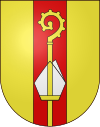
Lugano is a town and a municipality in southern Switzerland in the Italian-speaking canton of Ticino bordering Italy.

Gandria is both a quarter of the city of Lugano in the Swiss canton of Ticino, and a village on the northern shore of Lake Lugano, which forms the core of that quarter. Until 2004, the quarter of Gandria was an independent municipality, joining with Lugano in that year.

There are 115 municipalities in the canton of Ticino, Switzerland,. Municipalities (comuni) are grouped in circles (circoli) which are part of districts (distretti).

Capolago is a village situated at the south-eastern extremity of Lake Lugano, in the Swiss canton of Ticino. Originally a municipality in its own right, Capolago is now a quarter of the municipality of Mendrisio, itself part of the district of Mendrisio.

Cadro is quarter of the city of Lugano and a former municipality in the district of Lugano in the canton of Ticino in Switzerland. On 14 April 2013 the former municipalities of Bogno, Cadro, Carona, Certara, Cimadera, Valcolla and Sonvico merged into the city of Lugano.

Carona is a former municipality in the district of Lugano in the canton of Ticino in Switzerland. On 14 April 2013 the former municipalities of Bogno, Cadro, Carona, Certara, Cimadera, Valcolla and Sonvico merged into the municipality of Lugano.

Collina d'Oro is a municipality in the district of Lugano in the canton of Ticino in Switzerland. It was formed from the 2004 union of the villages of Agra, Gentilino, and Montagnola. On 1 April 2012, it incorporated the formerly independent municipality of Carabietta.
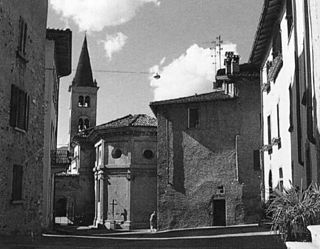
Sonvico is a quarter of the city of Lugano and former municipality of the Lugano district in the canton of Ticino in Switzerland. On 14 April 2013 the municipality of Sonvico merged into the municipality of Lugano becoming a new neighborhood. The medieval part of Sonvico village consist is an old citadel with a compacted structure full of narrow and intricate lanes.
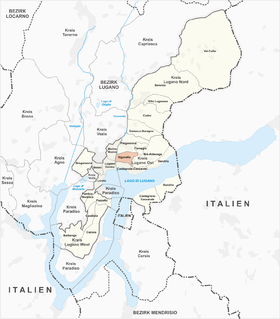
Viganello is a quarter of the city of Lugano, Switzerland. Viganello was formerly a municipality of its own, having been incorporated into Lugano in 2004. It was first recorded in 1300 as de Viganello.
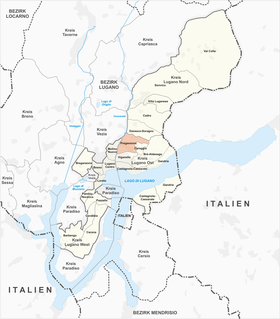
Pregassona is a quarter of the city of Lugano, Switzerland. Pregassona was formerly a municipality of its own, having been incorporated into Lugano in 2004.

The Diocese of Lugano is a diocese in Switzerland covering the canton of Ticino. The diocese is a branch of the Catholic Church immediately subject to the Holy See. In 2004, there were 233,017 baptised of 306,846 inhabitants. It is currently ruled by the Bishop Pier Giacomo Grampa and has as its principal patron St. Charles Borromeo, Archbishop of Milan, and as a secondary patron Saint Abundius, Bishop of Como.
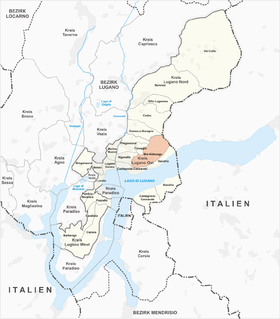
Brè-Aldesago is a quarter of the city of Lugano, in the Swiss canton of Ticino.
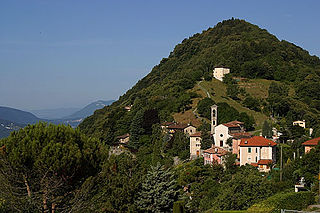
Brè is a village on the eastern slopes of the mountain of Monte Brè, in the Swiss canton of Ticino. Politically the village forms part of the Brè-Aldesago quarter of the city of Lugano, although until 1972 Brè-Aldesago was an independent municipality, known simply as Brè until 1953.
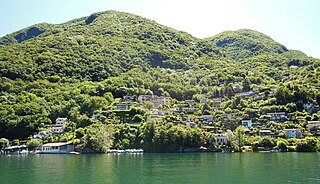
Caprino is a village on the southern shore of Lake Lugano in the Swiss canton of Ticino, to the east of the Italian exclave of Campione d'Italia and below the summit of Sighignola. Some 0.5 kilometres (0.31 mi) east of Caprino village is Cantine di Caprino, a smaller settlement. Politically both form part of the Castagnola-Cassarate quarter of the city of Lugano, although until 1972 Castagnola-Cassarate was an independent municipality under the name Castagnola.
Cassarate is a village on the northern shore of Lake Lugano, to the east of the outfall of the Cassarate River, in the Swiss canton of Ticino. Politically the village forms part of the Castagnola-Cassarate quarter of the city of Lugano, although until 1972 Castagnola-Cassarate was an independent municipality under the name Castagnola.

Davesco-Soragno is a quarter of the city of Lugano, Switzerland. Davesco-Soragno was formerly a municipality of its own, having been incorporated into Lugano in 2004.

Pazzallo is a quarter of the city of Lugano in the Swiss canton of Ticino. Pazzallo was formerly a municipality of its own, having been incorporated into Lugano in 2004.

Monteceneri is a municipality in the district of Lugano in the canton of Ticino in Switzerland. It was created on 21 November 2010 through the merger of the municipalities of Medeglia, Bironico, Camignolo, Rivera and Sigirino.

Aldesago is a village on the western slopes of the mountain of Monte Brè, in the Swiss canton of Ticino. Politically the village forms part of the Brè-Aldesago quarter of the city of Lugano, although until 1972 Brè-Aldesago was an independent municipality.

Besso is a quarter of the city of Lugano, in the Swiss canton of Ticino. It forms the part of the city which is uphill of Lugano railway station, and is separated from the city centre by that station and its rail approaches. Besso was developed as a residential area in the late nineteenth century, driven by the opening of the railway in 1882. By 2011, it had a population of 4,993.

